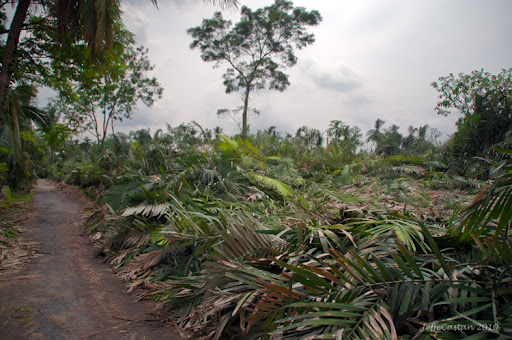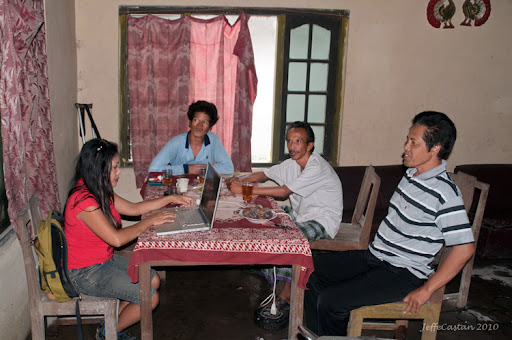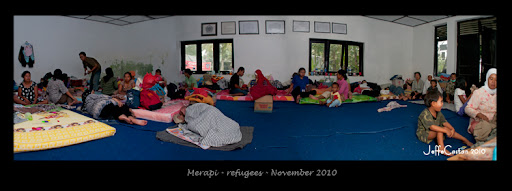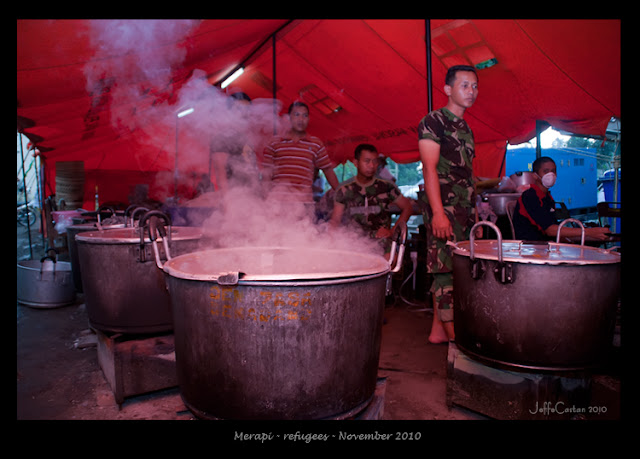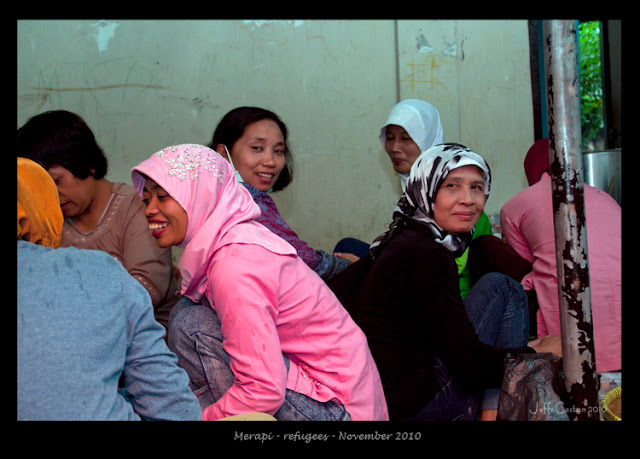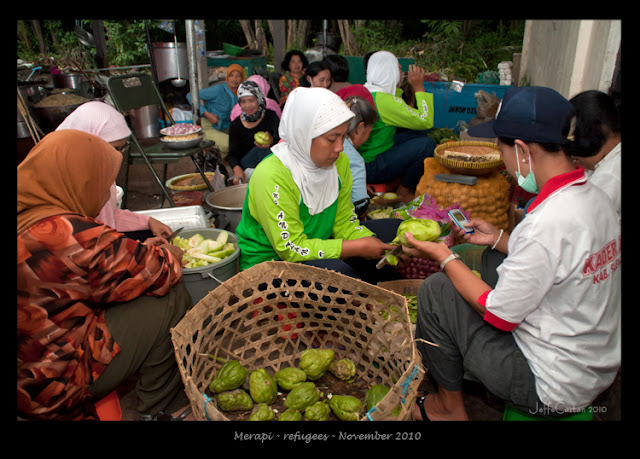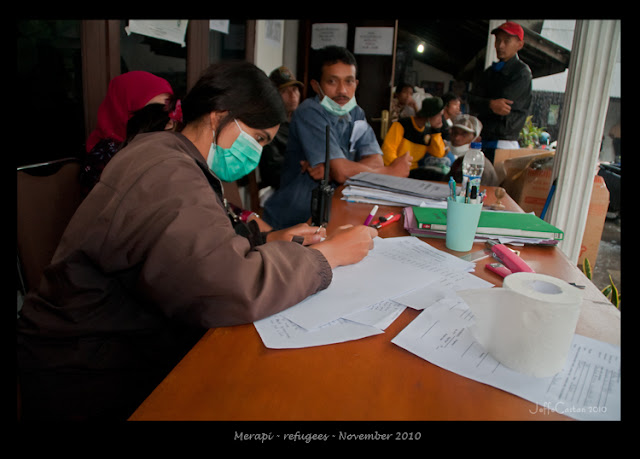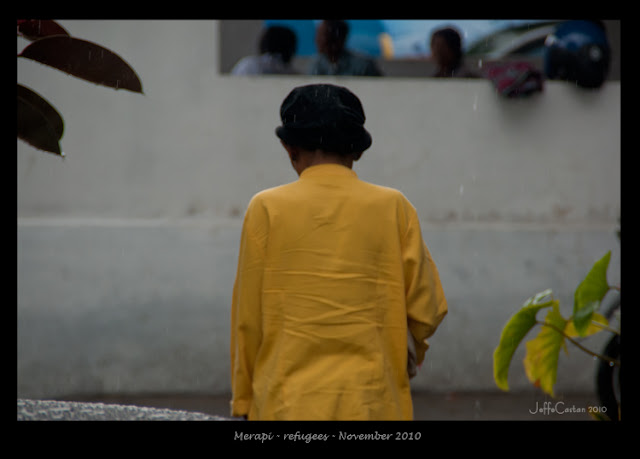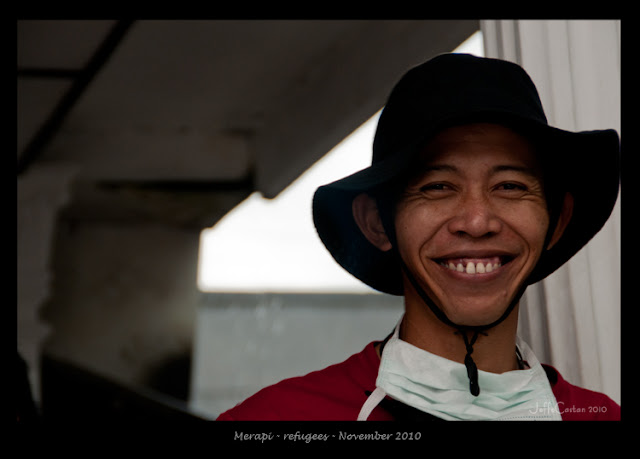Suite à mon appel du 26 Novembre 2010, Claude Grandpey, Vice-President of L'Association Volcanologique Européenne (L.A.V.E.), contacta le lieutenant-colonel Philippe BESSON, officier de sapeurs-pompiers professionnels et fondateur d'une équipe de secours internationale qui se nomme « POMPIERS DE L'URGENCE INTERNATIONALE » qui répondit positivement.
Inutile de vous dire la joie des villageois de savoir qu'ils pouvez recommencer à espérer.
Il fut donc organisé une réunion pour établir dans le détail une liste des besoins de la population de ces deux villages. Au total, c'est environ 700 personnes dont 50 enfants, qui vont être secourus.
Le principal problème de ces deux villages, comme beaucoup d'autres, est que la cendre qui a recouvert la région, a détruit les récoltes de « snake fruit », principale source de revenu de ces agriculteurs très modestes.
Et il faudra environ 1 an pour que la terre redevienne productive. Autant dire que l'inquiétude est grande pour l'avenir.
Le gouvernement indonésien s'est engagé a dédommager ces agriculteurs pour la perte de leur exploitation. Mais l'Indonésie fait face à deux désastres majeurs, survenus en même temps : l'éruption de plusieurs volcans, dont le Volcan Merapi a fait le plus de dégâts, et le tsunami qui a ravagé les iles mitoyennes de Sumatra.
Le contexte géographique de l'Indonésie complique énormément la tâche des secours. L'acheminement des aides financières se heurte à l'amplitude territoriale, et la complexité de la situation. De nombreux villages ont du être relocalisé. Une économie locale qui soudain s'effondre. Des décisions politiques, comme : « doit-on laisser ces fermiers vivre si près du « montre » ? » durent à prendre.
Le gouvernement est face à une crise économico-sociale majeure.
Alors peu importe qui aide, toutes les aides possibles, petites ou grandes, individuelles ou collectives, sont plus que bienvenues…
Les règlements de comptes se feront plus tard…
Following my call of the 26th November 2010, Claude Grandpey, Vice-President of European Volcanological Association (LAVA), contacted Lt. Col. Philippe Besson, fire brigade officer and founder of a professional rescue team is international called " POMPIERS DE L'URGENCE INTERNATIONALE " who replied positively.
Needless to say, the joy of the villagers to know that they can start to hope again.
It was therefore organized a meeting to establish in detail a list of needs of the population in these two villages. In total, about 700 people including 50 children, will be rescued.
The main problem of these two villages, like many others, is that the ash that blanketed the region, destroyed snake fruit's crops, the main source of income of these very modest farmers.
And it will take about a year for the land become again productive. Needless to say that the concern is great for the future.
The Indonesian government has pledged to compensate these farmers for the loss of their harvest. But Indonesia faces two major disasters occurring simultaneously: the eruption of several volcanoes, Merapi Volcano made the most damage, and a tsunami that devastated the islands close to Sumatra.
The geographical context of Indonesia greatly complicates the task of relief. The delivery of financial aid is hampered by territorial magnitude and the complexity of the situation. Many villages had to be relocated. A local economy that suddenly collapses. Political decisions, such as: "should we let these farmers live so close to the "monster"?" hard to take.
The Government is facing a major social and economic crisis.
So no matter who aids, all possible help, small or large, individual or collective, are more than welcome ...
The "explanations" will come later ...
The meeting with the villagers
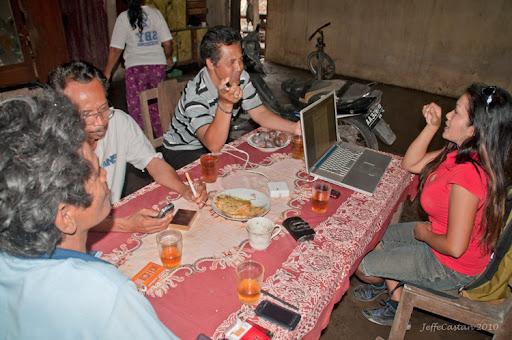
The wasted field of snake fruit
